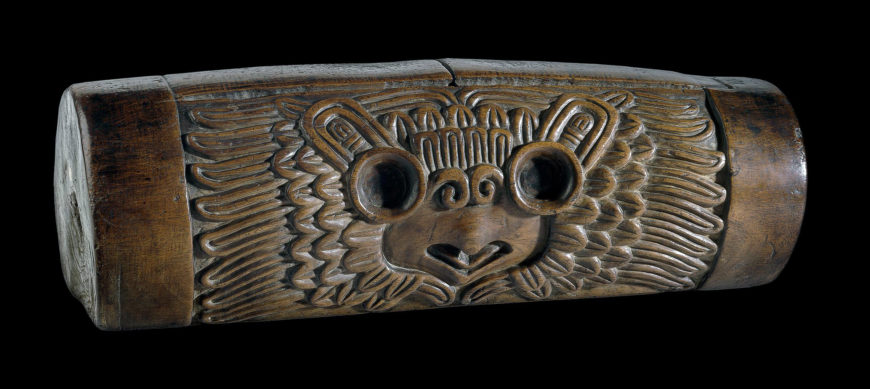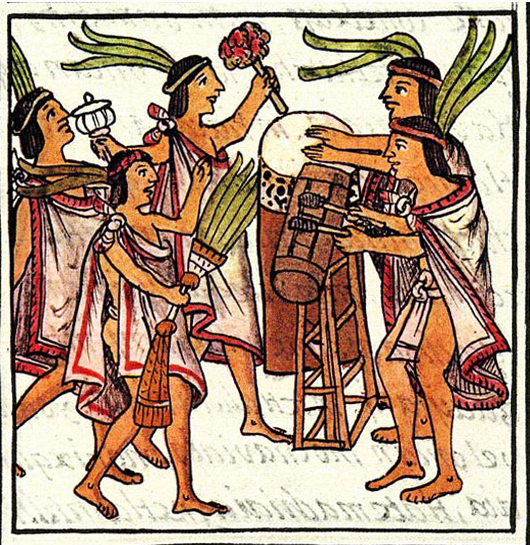
Wooden slit-drum (teponaztli), Mexica, AD 1325–1521, from Mexico, 16.5 x 50 cm (© Trustees of the British Museum)
A horned owl
This is an example of an Mexica slit-drum called a teponaztli in Nahuatl, the language spoken by the Mexica. It was hollowed-out and carved from a piece of hardwood. Two tongues were slotted at the top, carefully carved to achieve different tones when struck with drumsticks. Teponaztli were generally decorated with designs in relief or carved to represent human figures or animals. The origin of the instrument is not known but it is likely to go back many centuries before Mexica times. Different sources from the colonial period illustrate its use in various ceremonies, which involved also dancing.

An illustration of the “One Flower” ceremony. The two drums are the teponaztli (foreground) and the huehuetl (background). Bernardino de Sahagún and collaborators, General History of the Things of New Spain, also called the Florentine Codex, vol. 1, 1575–1577, watercolor, paper, contemporary vellum Spanish binding, open (approx.): 32 x 43 cm, closed (approx.): 32 x 22 x 5 cm (Medicea Laurenziana Library, Florence, Italy)
This teponaztli is the only known example that represents a horned owl, here carved on the front of the drum. Owls were considered to be creatures of ill omen. Their presence and nocturnal calls were believed to foretell death or misfortune. Owls were also associated with Mictlantecuhtli, the Lord of the Underworld, and with the powers of darkness. Since the owl was supposed to serve as a messenger to Mictlantecuhtli, it has been suggested that this particular teponaztli could have been use in funerary ceremonies.
*The people and culture we know as ‘Aztec’ referred to themselves as the Mexica (pronounced Me-shee-ka).
© Trustees of the British Museum
Additional resources:
M. E. Miller and K. Taube, An illustrated dictionary of the gods and symbols of Ancient Mexico and Maya (London, Thames and Hudson, 1997)
R.F. Townsend, The Aztecs (London, Thames and Hudson, 2000)
C. McEwan, Ancient Mexico in the British Museum (London, The British Museum Press, 1994)

